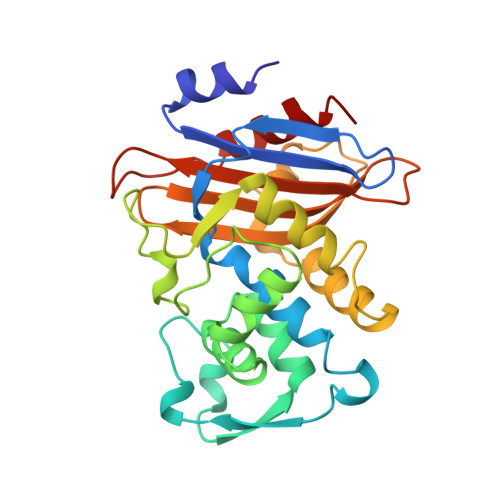An engineered Staphylococcus aureus PC1 beta-lactamase that hydrolyses third-generation cephalosporins.
Zawadzke, L.E., Smith, T.J., Herzberg, O.(1995) Protein Eng 8: 1275-1285
- PubMed: 8869640
- DOI: https://doi.org/10.1093/protein/8.12.1275
- Primary Citation of Related Structures:
1PIO - PubMed Abstract:
The beta-lactamase from Staphylococcus aureus PC1 has been cloned into an Escherichia coli vector for site-directed mutagenesis and high-level protein expression. A mutant enzyme has been produced in which Ala238 is replaced by a serine, and Ile239 is deleted (A238S:I239del). The engineered enzyme hydrolyses third-generation cephalosporins substantially more rapidly than the parental enzyme does, while hydrolysis of benzylpenicillin is slower with the mutant than with the wild-type and native enzymes. The mutant beta-lactamase has been crystallized and the structure determined and refined at 2.8 A resolution. The disposition of the beta-strand which forms the side of the active site is altered in comparison with the native S. aureus beta-lactamase structure, widening the active site cleft and providing space to accommodate the bulky side-chains of the third-generation cephalosporins.
- Center for Advanced Research in Biotechnology, University of Maryland Biotechnology Institute, Rockville 20850, USA.
Organizational Affiliation:
















